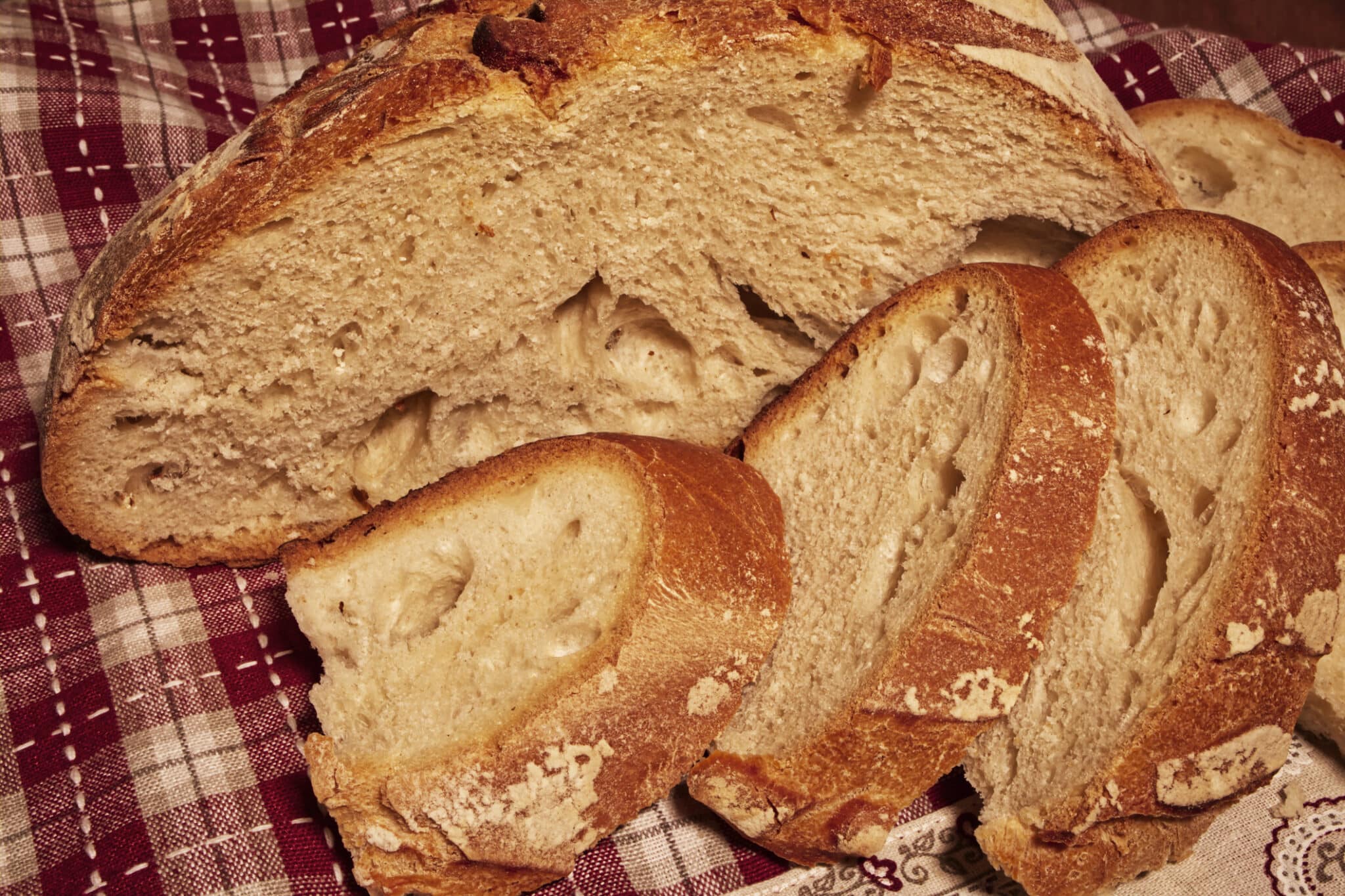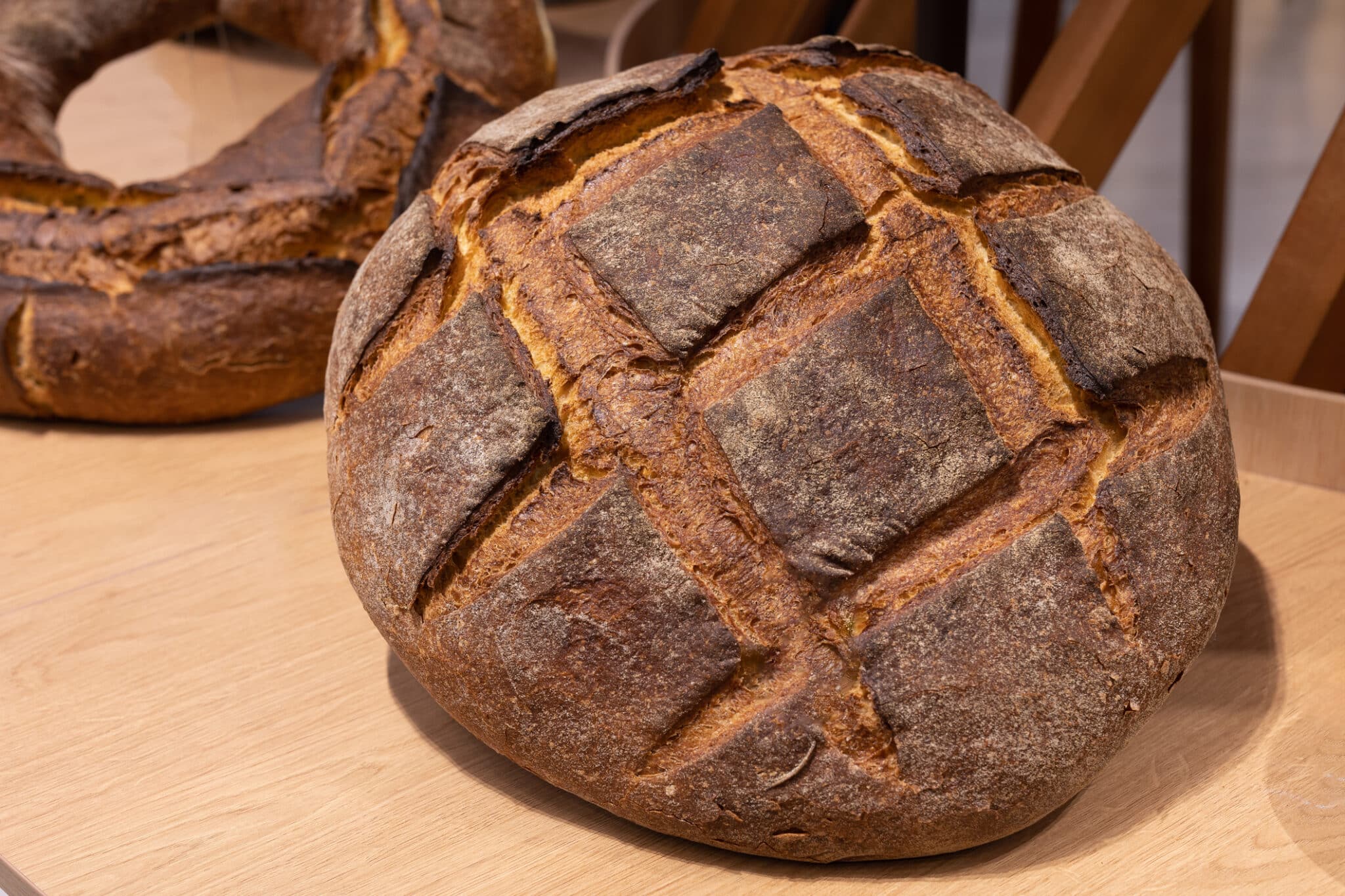The Altamura bread is one of the most representative symbols of Italian gastronomic tradition. This bread, known for its crisp crust and soft crumb, has a ancient history and fascinating that dates back centuries. Originating from the city of Altamuralocated in the Apulia region, this bakery product has been awarded the PDO (Protected Designation of Origin) in 2003, a certificate of quality and authenticity certifying its production and unique characteristics.
La history of Altamura Bread è deeply rooted at culture local and in the traditions peasant women of the Apulia. The first traces of this extraordinary bread date back to Roman times, as evidenced by some writings by Horacethe famous Latin poet, who mentioned this bread as one of the best he had ever tasted during his travel. This bread was already appreciated for its crunchy texture and its unique flavour, and over the centuries its fame has only grown. The recipe for Pane di Altamura has been handed down from generation to generation, keeping intact its authenticity and its link with the territory. Each family has contributed to preserving and perfecting the production technique, transforming this bread into a true symbol of the Apulian culinary tradition.
The secret of Altamura bread's success lies in the simple and genuine ingredients used in its preparation. La remilled durum wheat flourwater, salt and natural yeast (mother yeast) are the only elements needed to create this masterpiece of bread-making. The durum wheat flour used is exclusively that cultivated in the areas surrounding Altamura, an area that offers ideal conditions for the growth of this type of wheat. This flour, rich in protein and gluten, is essential to obtain a compact and honeycombed crumb, the distinctive characteristic of Pane di Altamura. The mother yeast, obtained from the natural fermentation of water and flour, is refreshed daily to keep it active and vital. Its presence guarantees a long and uniform leavening, which can last up to 18 hours, giving the bread a unique aroma and flavour.

The production of Pane di Altamura is a process that requires time, passion and an in-depth knowledge of traditional techniques. Each stage of production is carried out with care and attention, from the preparation of the dough to the final baking. After rising, the dough is moulded into typical shapes, such as the classic high loaf or the low loafand baked in wood-fired ovens. Baking is a crucial moment: the intense heat of the wood-fired oven creates a thick, crispy crust, while the inside remains soft and moist, perfect to accompany a wide range of dishes. Each loaf is the result of craftsmanship that respects centuries-old traditions, guaranteeing a final product of highest quality.
La preparation of Altamura bread is an ancient art that requires dedication and an in-depth knowledge of traditional techniques. It all starts with the choice of ingredients, which must be of excellent quality to guarantee an optimal result. The flour used must be exclusively durum wheat, cultivated in the areas surrounding Altamura. This flour is rich in protein and gluten, two fundamental components to obtain a compact and honeycombed crumb, the distinctive characteristic of this bread. The water used must be pure and free of impurities, while the sea salt adds that touch of flavour that enhances the bread's taste.
The sourdough is another essential element in the preparation of Pane di Altamura. This type of yeast, obtained from the natural fermentation of water and flour, is refreshed daily to keep it active and vital. Its presence guarantees a long and uniform leavening process, which can last up to 18 hours. This slow rising process gives the bread a unique aroma and flavour, as well as making it more digestible. The mother yeast, in fact, facilitates digestion and improves the absorption of nutrients, making Pane di Altamura not only tasty, but also healthy.

Once the dough has been prepared, we proceed to the kneading stage, which requires skill and precision. The dough is moulded into typical shapes, such as the high loaf or the low loafand left to rest to allow a second rising. Baking takes place in wood-fired ovensa method that gives the bread its characteristic smoky flavour and crispy crust. The intense heat of the wood-fired oven creates a thick, crispy crust, while the inside remains soft and moist, perfect to accompany a wide range of dishes. Baking is a crucial moment: the intense heat of the wood-fired oven creates a thick, crispy crust, while the inside remains soft and moist, perfect to accompany a wide range of dishes. Each loaf is the result of craftsmanship that respects centuries-old traditions, guaranteeing a final product of the highest quality.
The Altamura bread is not just a food product, but a real cultural symbol. Each bite tells a story of centuries-old traditions, love of the land and respect for artisanal methods. This bread is often at the centre of Apulian tables, accompanying dishes of all kinds, from the simplest to the most elaborate. Its presence is synonymous with conviviality and sharing, fundamental elements of Italian culture. Every family has its own way of enjoying Pane di Altamura, but what they all have in common is an appreciation for its quality and unique flavour.
In addition to its cultural value, the Altamura bread also has considerable nutritional benefits. Being made from durum wheat flour, it is rich in fibre, protein and B vitamins. The presence of sourdough also facilitates digestion and improves the absorption of nutrients. Thanks to the long leavening process, the bread is also lighter and more digestible than other industrial breads. Pane di Altamura is therefore not only a pleasure for the palate, but also an ally for health. Its nutritional characteristics make it suitable for everyone, including those on special diets or wishing to maintain a healthy lifestyle.
The Altamura bread represents a perfect combination of tradition and innovation. While its preparation follows ancient and established methods, modern variants can be found to suit the tastes and needs of contemporary consumers. Many bakeries and bakery shops are experimenting with new ingredients and techniques, while keeping the fundamental principles of the traditional recipe. This ability to evolve without losing its identity is one of the secrets of the success of Pane di Altamura, which continues to conquer palates all over the world.
We are a young Web Agency with more than 10 years of experience, we love travelling and discovering new places, that is why we write every day on Italia Delight our travel site.

Italia Delight is your definitive guide to Italian restaurants, offering a comprehensive directory and web marketing services to enhance every dining experience. Discover, taste and connect with Italian tradition.
To provide the best experiences, we and our partners use technologies like cookies to store and/or access device information. Consenting to these technologies will allow us and our partners to process personal data such as browsing behavior or unique IDs on this site and show (non-) personalized ads. Not consenting or withdrawing consent, may adversely affect certain features and functions.
Click below to consent to the above or make granular choices. Your choices will be applied to this site only. You can change your settings at any time, including withdrawing your consent, by using the toggles on the Cookie Policy, or by clicking on the manage consent button at the bottom of the screen.